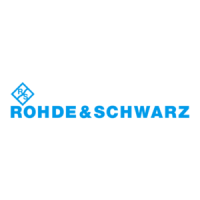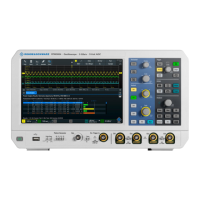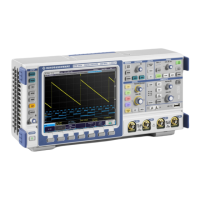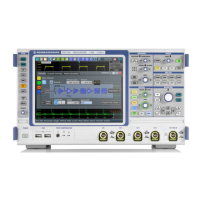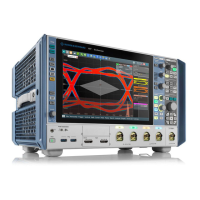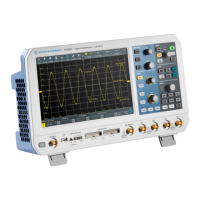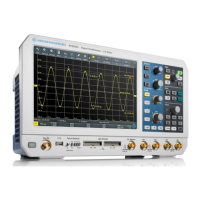Power analysis (option R&S RTM-K31)
R&S
®
RTM3000
368User Manual 1335.9090.02 ─ 09
14.6.1 Slew rate
The slew rate analysis measures the rate of change of the voltage or current waveform
during the switching of a switching transistor.
14.6.1.1 Slew rate results
The results of "Slew Rate" measurements are:
●
the voltage waveform or the current waveform
●
a waveform of the derivative of voltage and current
●
numeric measurement results
For a detailed description of the numeric results, see Chapter 14.5.1.1, "Ripple
results", on page 359.
Also for each measurement result you can enable a statistic evaluation of the mea-
surement results. It returns the current, minimum and maximum measurement values,
the average and standard deviation, and the number of measured waveforms.
14.6.1.2 Configuring slew rate measurements
For details of the configuration settings, see Chapter 14.6.1.3, "Slew rate settings",
on page 369.
1. Press the Apps Selection key. Tap "Power Analysis".
2. In the "Switching" tab, tap "Slew Rate".
3. Connect the differential voltage probe and the current probe to the oscilloscope.
It is recommended that you use a high-voltage differential probe for measurements
at the DUT power input.
4. Demagnetize the current probe. For details, see the user manual of your current
probe.
5. Select the "Tools" tab.
6. Connect the probes to the R&S RT-ZF20 power deskew fixture.
7. "Deskew" the probes and adjust the "Zero Offset".
8. Disconnect the probes from the R&S RT-ZF20 power deskew fixture.
9. Connect the probes to the DUT:
● Connect the positive (+) signal socket of the differential probe to the drain of
the transistor.
● Connect the negative (-) signal socket of the differential probe to the source of
the transistor.
● Connect the current probe to the source of the transistor.
10. Close the "Power Analysis".
Switching power measurements
